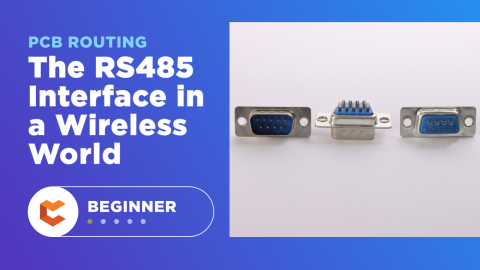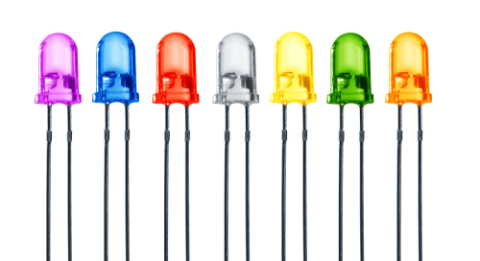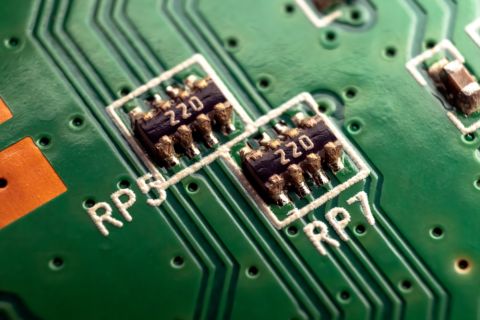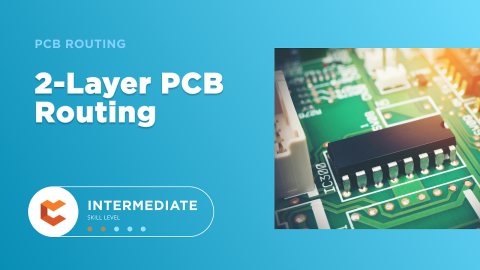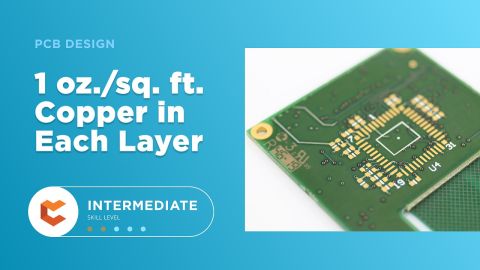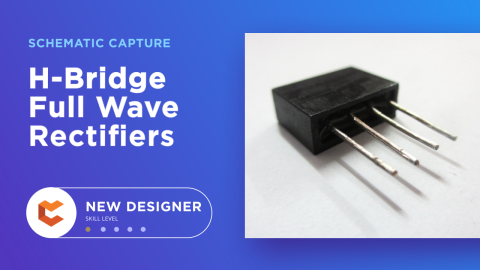The Advantages and Disadvantages of Active and Passive RFID Technologies

When I’m designing a new PCB or product one of the hardest parts for me is choosing exactly which components I should use. It seems like every technology out there now has a different configuration to achieve the best performance. Even when you’re dealing with a fairly straightforward technology like radio frequency identification (RFID) circuit board there are a lot of flavors to choose from. While every type of RFID design label uses an active RFID reader, also known as an interrogator, the tags for each arrangement are different. There are three main categories of RFID layout schematics that you can use based on these RFID tag types: passive, semi-passive, and active. Each of the systems has its own pros and cons that can help you decide whether it’s right for your application.
Passive RFID Technologies
The simplest of the three RFID configurations is one that uses an active reader and a passive tag. Passive RFID tags are made up of only two components: an integrated circuit (IC) schematic and an antenna. When combined these are sometimes called an inlay. Notably, a passive RFID tag does not include a constant power source or a battery.
Passive RFID system tags don’t need a battery because they collect their energy from the reader’s interrogation signal. To read tags in this arrangement, a reader will send out a powerful signal to all tags in its read frequency range. The tags then receive that signal on their antennas and use the energy from it to power up their ICs. After their processors have completed their tasks, the tags use inductive and backscatter coupling to communicate back to the reader. All of these characteristics mean that using a passive RFID tags system has a variety of pros and cons.
Advantages of RFID Technology
- Inexpensive - Since RFID system tags have a maximum of three components (IC, antenna, enclosure) they can be quite cheap.
- Lightweight - The minimalist design of a passive tag also means they don’t have much mass.
- Lifetime - Other tags that use a battery may only have a lifetime of 3-5 years. The endurance of passive tags depends on the materials they’re made of and the environment they operate in. If they are placed in a gentle environment they could operate for up to 20 years.
- Low Noise - Inductive and radiative coupling printed circuit board without an active antenna generates almost no noise.
Disadvantages of RFID Technology
- Short Range - The absence of an active antenna means that a passive tag has an extremely short frequency range. Tags operating in low to high frequency may have a maximum communication range of 2 feet. If they’re using a very high frequency they may get up to 20 feet, but that’s still a relatively short range.
- Limited Storage - Even most non-volatile memory requires power to keep its contents from degrading. Without an onboard battery, passive tags can’t store much information.
- Requires Reader - Passive types of an RFID tag require a high-powered reader to even power on.
- No Sensors - Most sensors require constant power to operate and possibly need memory to store data. This makes passive tags unsuitable for most sensing applications.
Semi-Passive RFID Technology
One step up from a passive tag is a semi passive tag. In a semi-passive system, the tags will have some kind of onboard battery, but they won’t have an active transmitter. This means they still use an inductive or radiative coupling technology to communicate, leaving them with a shorter range than an active system. That battery can also support sensors and memory for power consumption.
Advantages
- Medium Range - One of the primary reasons passive tags have such a short read range is because they need to be close to a reader to power on. The power-on range is much shorter than the reflected communication range. Semi-passive tags can use their batteries to power their ICs, meaning they are limited by the high communication range rather than the shorter power range. A semi-passive system can read an RFID tag at 100 feet or more.
- Active Components - Semi-passive tags are able to support sensors and memory because of their onboard battery. If you have an application that needs some sensors and memory but doesn’t need an extremely long-range, you may be able to use semi-passive RFID printed circuit.
- Medium Expense - Semi-passive tags are more expensive than passive tags but are certainly cheaper than active tags.
- Low Noise - Just like in a passive system, semi-passive tags don’t add much noise to the environment.
Disadvantages
- Requires Reader - Even though semi-passive tags don’t rely on a reader for power, they still need one to communicate.
- Limited Lifetime - The presence of a battery automatically limits the lifetime of a tag. Instead of 20 years you might expect 2-7 years of operation. In addition, a tag with a battery will need a more gentle environment than a tag with just an IC and antenna.
Active RFID Systems
The most complex form of RFID is active RFID tag. In this scheme, the tag has a larger battery and uses an active transmitter instead of a passive one. An active transmitter necessitates a larger battery, which can also power a faster processor and other more energy intensive components.
Advantages
- Long Range - An active transmitter can communicate over longer distances. Active tags can have a read range of more than 300 feet, over 3 times that of semi-passive tags.
- Low Power Readers - Since active tags use a powered antenna they don’t have to rely on a high-powered interrogator for all their signal strength.
- More Components - When you add a larger battery you can also use a more powerful processor, more sensors, more memory—more components overall. If your tag needs to do a lot of different things, an active tag might be the best choice for you.
Disadvantages
- Expensive - While passive tags may cost less than 10 cents per unit, active tags can cost as much as $20 per tag.
- Limited Lifetime - An active RFID tag is generally designed so that they have 3-5 years of battery life. After the battery runs out, though, you’ll need to get a new tag.
- Large and Heavy - Compared to a tag that’s as thin as a piece of paper, active tags are huge and weighty. Batteries are heavy and take up space. If you need your tags to fit between the pages of a book, active tags are probably not for you.
- Noisy - Using an active transmitter will add noise to your environment. Be sure to see how active tag noise will affect your system.
Although there are many advantages and disadvantages for passive, semi-passive, and active RFID, these are the most important things to remember:
- Passive tags can’t support sensors or memory and have a short range
- Semi-passive have a medium range and can still be cheap
- Active tags can do lots of things but are large, expensive, and heavy.
Armed with this knowledge you can choose the best type of RFID to use in your next project.
You can choose from many varieties when using RFID tags, but when it comes to PCB design in general, the choices can become overwhelming. That’s why it’s important to use good software to help guide you through the process. When you need to access an easy-to-use PCB layout tool that includes everything needed to build high-quality manufacturable circuit boards, look no further than CircuitMaker. In addition to easy-to-use PCB design software, all CircuitMaker users have access to a personal workspace on the Altium 365 platform. You can upload and store your design data in the cloud, and you can easily view your projects via your web browser in a secure platform.
Start using CircuitMaker today and stay tuned for the new CircuitMaker Pro from Altium.

